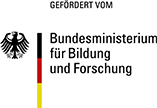As a professional, I would like to shed some light on the topic of a basic WI lease agreement. A lease agreement is a legal document that outlines the terms and conditions of a rental agreement between a landlord and a tenant. It is a crucial document that protects both parties and ensures that the rental process is smooth and hassle-free.
A basic Wisconsin (WI) lease agreement should contain certain essential clauses that must be followed by both the landlord and the tenant. Let`s take a look at the key components of a basic WI lease agreement:
1. Parties involved: The lease agreement should clearly mention the names and contact information of the landlord and the tenant.
2. Rental property: The agreement should describe the rental property, including the address, unit number, and any specific features such as parking, laundry, or storage facilities.
3. Lease term: The lease term specifies the duration of the rental agreement, including the start and end dates.
4. Rent and security deposit: The agreement should state the monthly rent amount, the due date for payment, and the consequences of a late payment. It should also specify the amount of security deposit required and how it will be handled.
5. Maintenance and repairs: The lease agreement should outline the responsibility of both parties in terms of maintaining the property. It should also state how repairs will be handled and who will be responsible for any damages.
6. Use of the property: The agreement should mention any specific restrictions on the use of the rental property. For instance, it may prohibit smoking, pets, or loud noises.
7. Termination clause: The lease agreement should specify the conditions under which the landlord or tenant can terminate the agreement before the lease term ends.
In conclusion, a basic WI lease agreement is a crucial document that outlines the terms and conditions of the rental agreement between a landlord and a tenant. It should cover the key components mentioned above and be signed by both parties before the beginning of the tenancy. By following these guidelines, you can ensure a smooth and hassle-free rental process that protects the rights of both you and your tenant.
